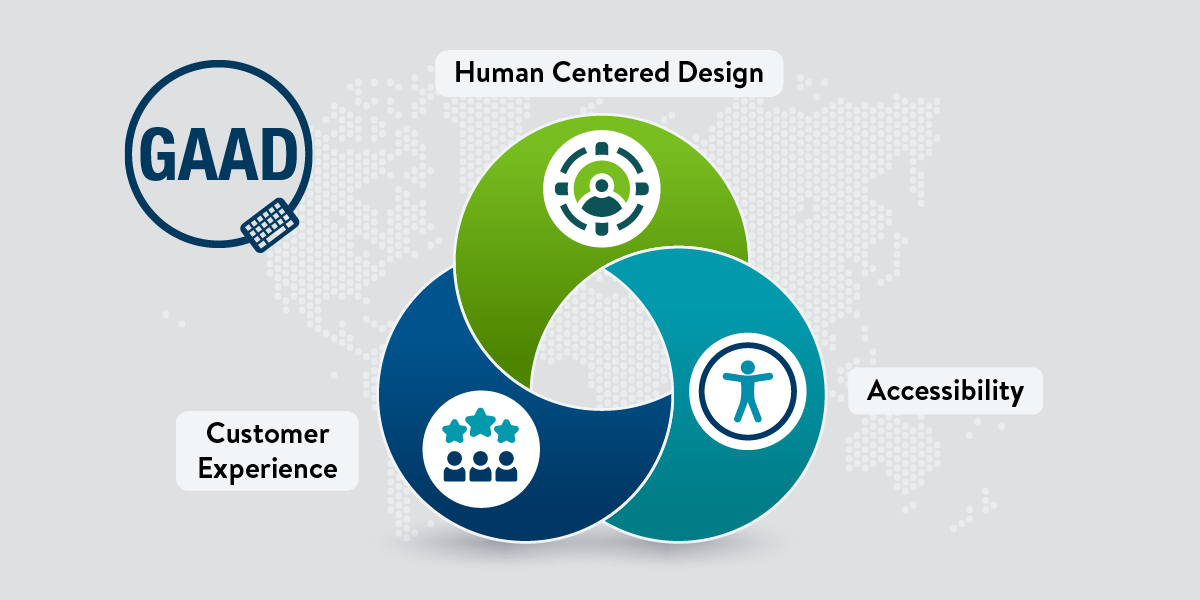Find the latest news from the Office of Accessibility. Once a month we will bring you tips, articles, and ways to learn more about digital accessibility. Want an easier way to stay informed? Subscribe to the Accessibility Newsletter!
Discover the importance of these abbreviations and how they come together to make a better digital experience for all.
5/16/2024 8:40:41 AM

A confluence of technology and cultural trends are driving a renewed focus on improving customer experience (CX). These trends include:
So, what is CX, and how is it different from other similar terms, including:
And, because we’re a digital accessibility blog, what do they have to do with accessibility, or a11y?
HCD is a problem-solving technique or practice based on:
HCD shares a lot with its cousin, user-centered design. Most view HCD as a slightly more holistic approach.
Like HCD, design thinking is an approach toward solving problems. Like HCD, it promotes an iterative process of prototyping and testing. Stanford University’s d.school is probably the best-known proponent of design thinking. Design thinking proponents approach problems in stages, such as:
The Nielsen Norman Group (NNG) is widely credited with popularizing the term. They say that user experience, “encompasses all aspects of the end-user's interaction with the company, its services, and its products.”
Usability is a subset of UX. NNG describes usability as “a quality attribute that assesses how easy user interfaces are to use,” based on these 5 measurables:
UX practitioners likely incorporate principles of HCD and/or design thinking in their work.
CX is a broader, more general term than UX. While UX is based on how people use and perceive an organization’s products, CX is the overall impression customers have of the organization’s brand, based on every interaction they’ve had with the organization.
Governor Tim Walz’s One Minnesota Plan states, “Customer experience refers to how Minnesota residents feel and what they think when they use government services.”
Organizations that focus on CX likely incorporate HCD, design thinking, and UX in their entire organization’s culture. This would encompass everything from:
Digital accessibility is the practice of using measurable, testable criteria to plan, design, and create digital content and technology so that it is usable by everyone, including people with disabilities. Incorporating a11y practices into your design thinking and HCD processes as well as your organization’s UX and CX missions helps avoid potential blind spots and limit variables. Organizations with a culture of a11y have greater confidence that what they do will serve the greatest number of people.
It’s not the buzzwords you use – it’s how you build them into your culture. A11y and other well-established practices like HCD are key tools toward building a CX culture.
Would you like to learn more about the accessibility work being done by Minnesota IT Services and the State of Minnesota? Once a month we will bring you more tips, articles, and ways to learn more about digital accessibility.
Accessibility
Accessibility